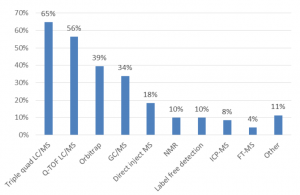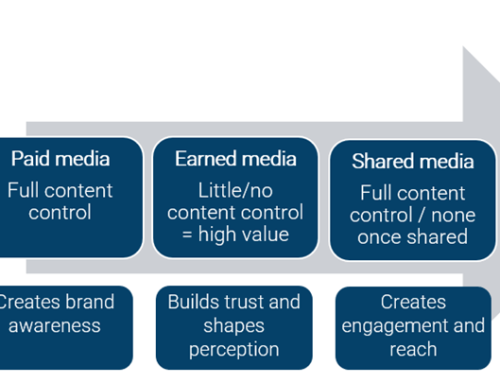Data taken from Top-Down Analytics (TDA) Research report: Metabolomics 2018
Metabolomics is one of the newer ‘omics’ fields, and focuses on the characterisation of the small molecule metabolites in biological systems. Metabolomics research has the potential to shed light on certain disease states, monitor patient response to treatment, and contribute to drug target discovery. Applications also span pharmaceutical development and neuroscience research.
In line with the growing popularity of the field, development of analytical systems capable of carrying out in-depth discoveries of the metabolome are on the rise. The market for the analytical systems and related products used for metabolomics is predicted to grow to $1.145 million in 2022. As well as significant market growth, funding for metabolomics research has also increased, with National Institutes of Health (NIH) grant funding rising from $100 million in 2007 to $900 million in 2017.
The TDA Metabolomics 2018 report outlines the trends and opportunities for this market, highlighting key areas of instrument use, industry insights, and any forecasted future challenges.
Instrument use in metabolomics
The most popular instruments for metabolomics analysis are triple quadrupole liquid chromatography mass spectrometry (LC-MS) systems, which comprise more than two-thirds of the market, according to a recent survey of metabolomics researchers. They are closely followed by quadrupole time-of-flight (Q-TOF) instruments, which offer accuracy, dynamic range, speed, and resolution of a large number of compounds.
Instruments used for metabolomics
Industry segment breakdown
Metabolomics analysis is heavily skewed towards academic labs, which contributes to the industry making up over 75% of the analytical instrument demand for metabolomics. Demand from the remaining industries participating in metabolomics research is small, with contract research organisations (CROs) in the second position, and government and biopharma comprising the third and fourth largest markets.
Future challenges
Although the market for metabolomics analysis has seen significant growth in the past decade, this has slowed and other ‘omics’ areas such as proteomics and genomics still receive much more attention. The huge chemical diversity of metabolites and their transient nature make their identification and study difficult. However, like proteomics, metabolomics is beginning to find a home in clinical applications. It will take time for diagnostic methods to become established, but this represents an example of how metabolomics is continuing to break into new fields.
Harnessing market insights
We work with a number of clients who play a critical role in developing innovative solutions for the growing metabolomics market. By utilising market insights like this, you can evaluate your plans against projected growth, as well as your competitors’ market share to accurately forecast into the future.
To buy the full report, click here.
To find out more about communicating in the metabolomics market, contact us.
By Lizzie Randall, Senior Account Executive at The Scott Partnership.






